Kabura Zushi with Koji: Japan’s Local Fermented Cuisine
Jan 07,2021
Kabura Zushi with Koji: Japan’s Local Fermented Cuisine
Jan 07,2021
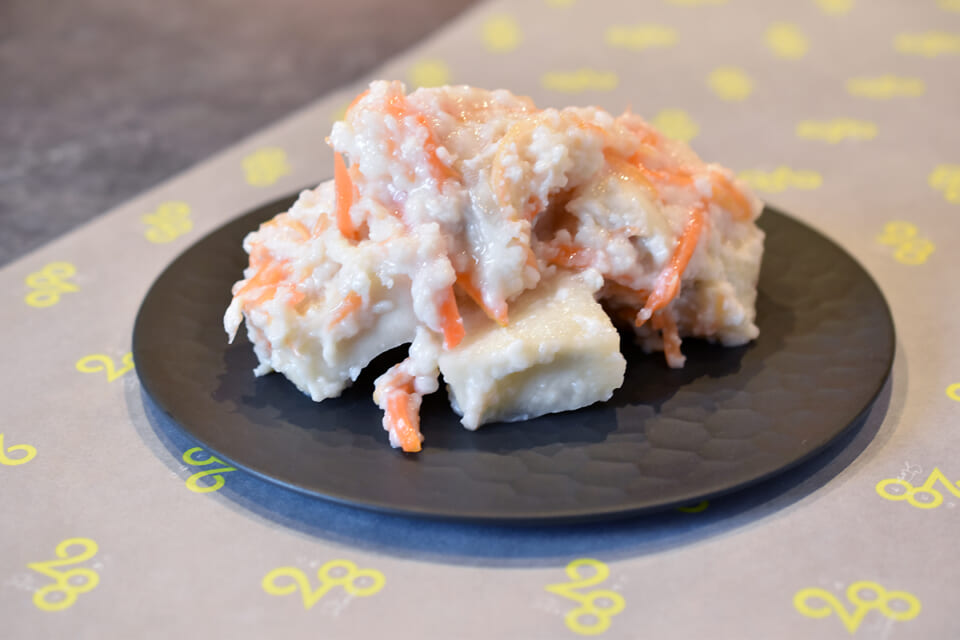

Nanto is a small city in the southwest of Toyama prefecture that borders on Kanazawa in Ishigawa prefecture. Nanto is probably best known for Gokayama, a district within the city consisting of traditional gassho-zukuri houses [Edo period (1603 to 1868) farmhouses with vast roofs] that is inscribed on the UNESCO World Heritage list. You may have also heard of kabura-zushi, a local delicacy that the city is justifiably proud of. Kabura-zushi is a fermented food made by sandwiching vinegar-marinated mackerel between turnips and then pickling them in koji rice malt.
One well-known kabura-zushi chef is Nakagawa Yuko, a fermentation expert highly regarded in the local community. She runs a craft beer bar while also leading a catering unit. She promotes her take on fermented food culture, with its fusion of the traditional and the modern, from Nanto to all parts of the country.
For this article, we spoke with her about her culinary activities and the famous kabura-zushi of Nanto.
Nakagawa’s career as a chef began when she took over from her great-grandmother preparing meals for her family members and employees who worked at her family’s barbershop.
“When I was in fifth grade, my great-grandmother, who had been in charge of staff meals, became too old to cook. So my parents told me to go to cooking lessons. I started learning local dishes from a cooking teacher who lived right behind us, and that was how I began my culinary journey.”
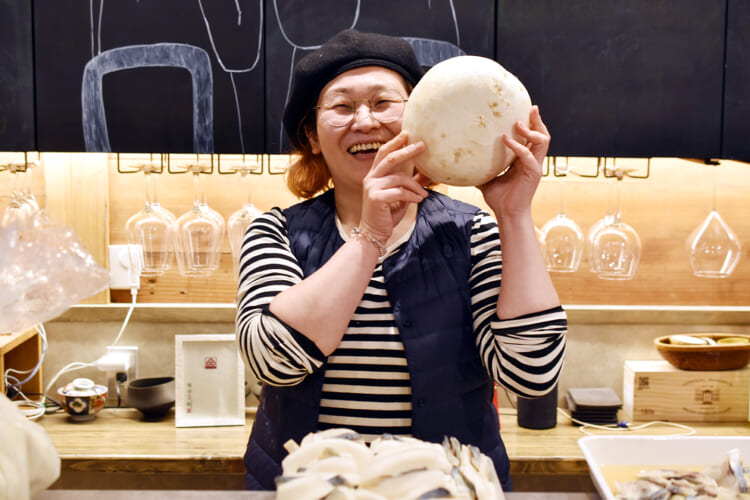
Nakagawa Yuko, a fermentation expert and chef, holds a large, early-ripening variety of turnip used in kabura-zushi
From her lessons, Nakagawa became well-acquainted with making local Nanto dishes including kabura-zushi as well as saba-zushi [pressed mackerel sushi], yogoshi [stir-fried vegetables dressed with miso], yubesu [egg and dashi stock agar], irigoki [simmered pickled daikon radish], and jibuni [duck meat stew]. Before long, she was very cognizant of the presence of the koji used in kabura-zushi.
Nakagawa’s inspiration to become a professional chef came in her 20s. A regular customer of the barbershop who she knew only as Hachiro turned out to be Ishiguro Hachiro, owner of Ishikuro Tanekoji, one of only a handful of starter koji shops in the country, and recognized as one of Japan’s leading koji masters.
“I had only known him as a guy from the neighborhood who regularly came in to get his hair cut. Only after I became an adult, did I realize the incredible skill he had as a starter koji master. I truly believe that if Hachiro hadn’t lived nearby, I wouldn’t be who I am today. Just by chance, one of the best koji makers was right here.”
Another force driving Nakagawa’s dedication to perfecting fermented foods and traditional cuisine was her desire to provide her sister’s premature baby with the best possible food and see the child grow up healthy.
After becoming known locally for her culinary skills, Nakagawa moved to Tokyo at the urging of the local city office. This move led her to build a wide network of followers, and she began promoting local Toyama cuisine nationwide. Around 2010, she formed the Ocatte catering unit, through which she provided catering services and workshops, starting in Toyama and expanding across the country.
In 2017, she opened gonma, a craft beer bar, with the intention of creating a base for her catering activities.
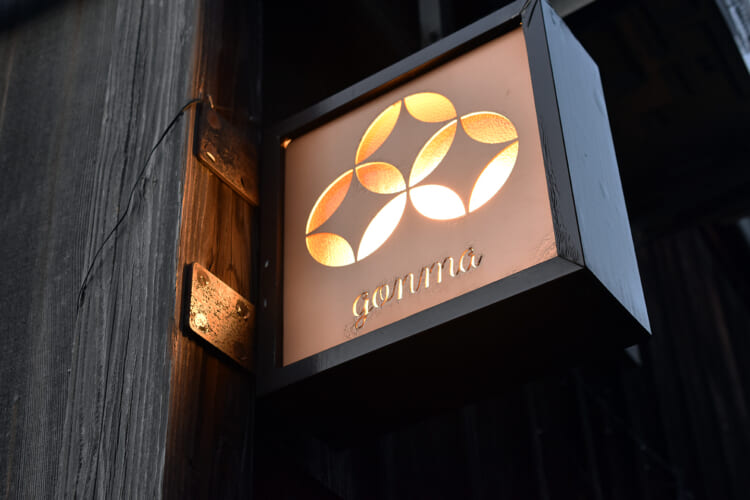
Nakagawa named her craft beer bar gonma after her family business’s name
“I’ve always loved craft beer, and before opening the bar, I often went to beer festivals such as the Tanabata Beer Festival in Toyama. I opened the bar with the idea of serving delicious local delicacies and the best of Hokuriku’s cuisine.”
Nakagawa is passionate about craft beer, which may seem like a completely different category from traditional local cuisine. Nevertheless, she has developed craft beer pairings for the bar that feature many delicious tastes, from local specialties like kabura-zushi to creative modern dishes and spicy, ethnic-inspired fare, showcasing her diverse culinary skills.
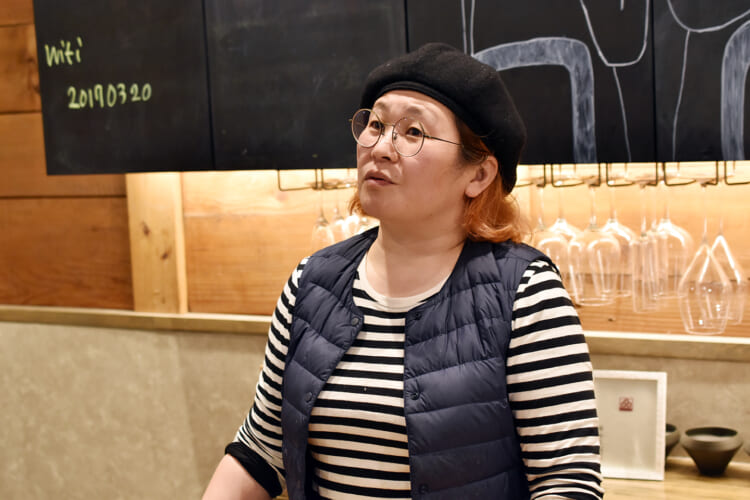
Her fermented spice curry, served only on Fridays, has recently become hugely popular, selling 60 servings a day.
“When I was in high school, I became obsessed with Indian curry. I would look up recipes at the library, buy all the spices, and make authentic curry at home. I love fermentation, but I still love spices to this day.”
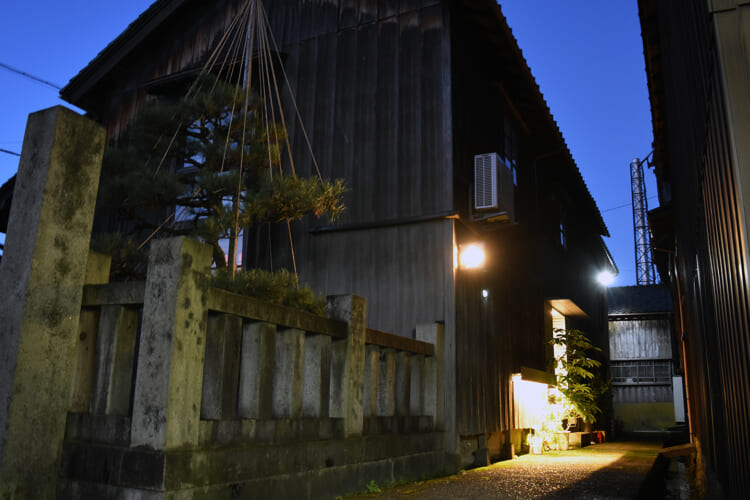
Gonma resides in a renovated warehouse next to her family’s barbershop
Nakagawa’s undertaking to spread her local cuisine across the country continues unabated.
In 2020, she launched 28Store, a site selling Nanto dishes online. The 28 in the brand name can be pronounced niwa, which is Nakagawa’s maiden name. It goes without saying that the first product 28Store listed was kabura-zushi.
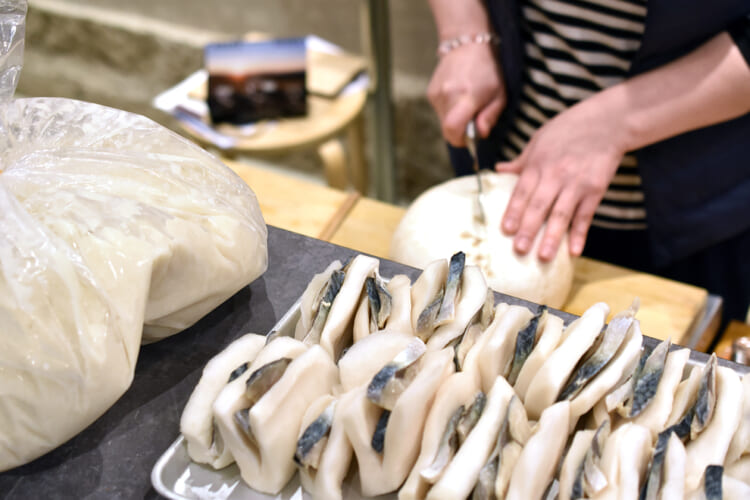
Preparing kabura-zushi. The vinegar-marinated mackerel are sandwiched in turnips.
A rush of orders came in immediately after kabura-zushi was listed for sale on 28Store. This rare item is based on a Niwa family recipe that has been refined with Hachiro’s advice. A pop-up store in the city of Toyama sold out its allotment of kabura-zushi every day.
“With our kabura-zushi, you can really taste the koji. What sets us apart is we use a lot more koji than ordinary kabura-zushi. We package the kabura-zushi while keeping as much of the liquid as possible, because much of the umami flavor is concentrated in the liquid. It would be a shame to just drain it away.”
Naturally, Nakagawa exclusively uses koji from Hachiro’s Ishikuro Tanekoji. Hachiro carefully crafts the highest quality koji, which is then processed into amazake [a sweet drink made from koji] that hasn’t fully fermented and is not yet very sweet. Nakagawa marinates the turnips wrapped around the mackerel in this mixture and lets it ferment for about a week while keeping a close eye on the temperature.
The koji lends the finished kabura-zushi sweetness, umami, and depth of flavor. Yet, surprisingly, the flavor is not overwhelming or cloying, and its refreshing texture leaves you wanting to savor every last bit of the koji left in the package.
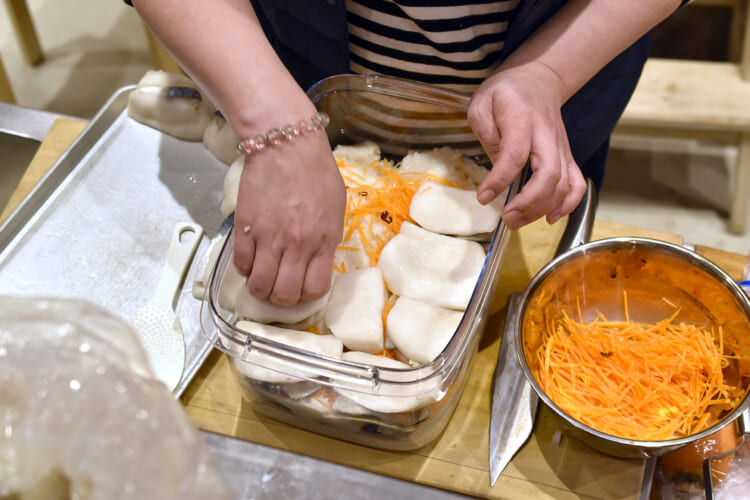
The turnips containing the mackerel and shredded carrots are layered like a mille-feuille before marinating
One of Nakagawa’s special touches is always using Fuji Vinegar, made by Iio Jozo in Kyoto, to marinate the mackerel. This vinegar uses a lot more rice than other vinegars, giving it a rich sweetness.
Most of the turnips she uses are grown by her younger brother, who is involved in local agriculture, and all are sourced from Nanto. The preparation is done in winter, with the coldest time when snow falls being the best, as this ensures the turnips retain their crunchy texture even after aging, resulting in the most flavorful turnips.
“If the temperatures are too warm, the turnips become soft. It’s strange that even if you try to recreate the low temperatures by putting the turnips in a refrigerator, they don’t turn out the same.”
Because it was once part of the Kaga Domain, Nanto shares many local dishes with the neighboring prefecture of Ishikawa. Kabura-zushi is one example. But in Nanto, people use mackerel instead of yellowtail, as is the custom in Ishikawa.
“In the future, I want to present more local dishes from Nanto on 28Store, such as saba-zushi and irigoki along with kabura-zushi.”
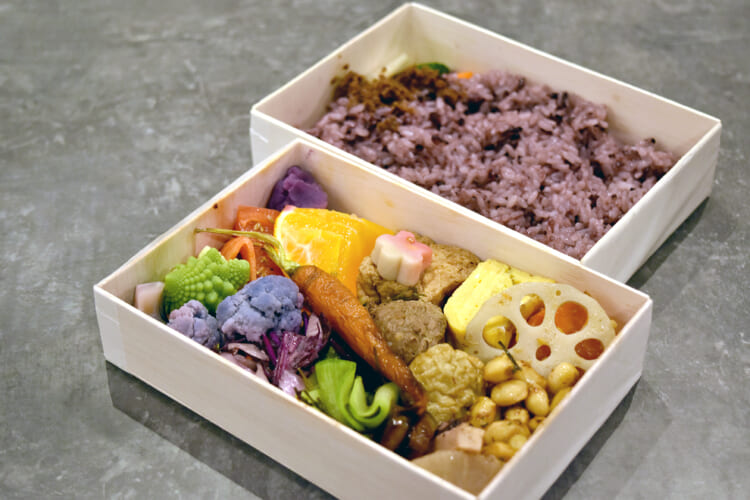
A bento box lunch made for a catering occasion. While generally following the precepts of Japanese cuisine, the lunch boxes also have some innovative side dishes using ethnic spices.
Nakagawa, who has a keen interest in modern Spanish and other cuisines, delves into the traditions of Japanese cuisine while following overseas cuisine and food trends.
Her approach as a chef — to give local cuisine a stylish twist and make it accessible to as many people as possible — is evident in her many activities.
“In the future, I hope to run a bento shop in one of my favorite places, San Sebastian in Spain. I’d love to serve bento lunches that blend Japanese cuisine with a modern feel for Spanish foodies.”
The day when local Nanto specialties reach a distant city renowned for its gastronomy may not be too far off.
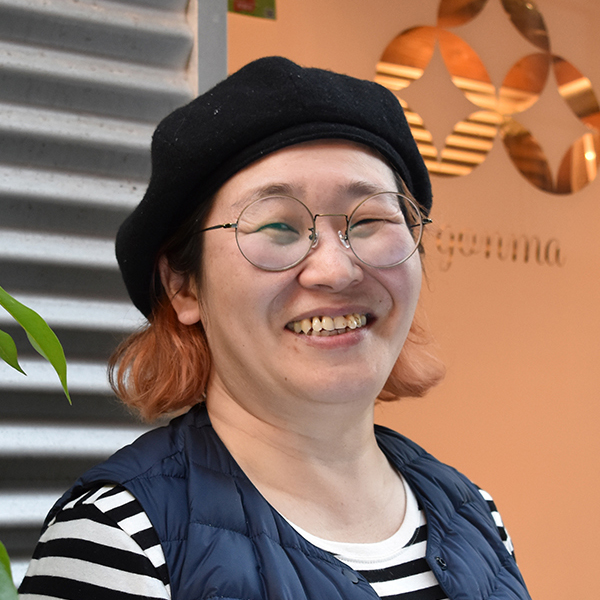
Born in Nanto, Toyama, Nakagawa is a chef specializing in fermented foods such as kabura-zushi and saba-zushi, and she promotes local cuisine from Nanto across Japan and around the world. In addition to the Ocatte catering unit and the gonma craft beer bar, she operates 28Store, a shop that sells Toyama delicacies online. Nakagawa also wields a pair of scissors as a fifth-generation barber at her family’s Niwa Barbershop.